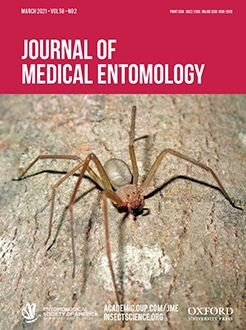The strong dependency of some vectors on their host as a source of habitat can be viewed as a weak link in pathogen's transmission cycles using the vertebrate host as a ‘Trojan horse’ to deliver insecticides directly to the vector-host point of contact (hereafter ‘systemic control'). This could, simultaneously, affect the survival of blood-feeding females and coprophagic larvae. Sand-flies, vectors of leishmaniasis worldwide, are often dependent on their bloodmeal host as a source of habitat and may therefore be good candidates for systemic control. In the present study, we field-tested this methodology by baiting Meriones crassus (Sundevall, 1842) (Rodentia:Muridea) with Fipronil-treated food pellets and evaluated its effect on reducing sand-fly emergence rate, in general, and of that of blood-fed females, in particular. We demonstrated 86% reduction in the abundance of female sand-flies that exit burrows of Fipronil-treated jirds, whereas male abundance was unaffected. Furthermore, whereas in control burrows 20% of the females were blood-fed, in treatment burrows no blood-fed females were detected. Sand-fly abundance outside the burrows was not affected by burrow treatment. This highlights the focal specificity of this method: affecting female sand-flies that feed on the reservoir host. This should result in the reduction of the pathogen transmission rate in the vicinity of the treated area by reducing the prevalence of leishmania-infected sand-fly females. These results hold promise for the potential of the systemic control approach in this system. Our next-step goal is to test this methodology at a large-scale cutaneous leishmaniasis control program.
How to translate text using browser tools
6 November 2020
Systemic Control of Cutaneous Leishmaniasis Sand-Fly Vectors: Fipronil-Treated Rodent Bait Is Effective in Reducing Phlebotomus papatasi (Diptera: Psychodidae) Female Emergence Rate From Rodent Burrows
Ido Tsurim,
Gideon Wasserberg,
Gil Ben Natan,
Zvika Abramsky
ACCESS THE FULL ARTICLE
It is not available for individual sale.
This article is only available to subscribers.
It is not available for individual sale.
It is not available for individual sale.

Journal of Medical Entomology
Vol. 58 • No. 2
March 2021
Vol. 58 • No. 2
March 2021
diseases
fipronil
leishmaniasis
Systemic control
tightly coupled vector-host




